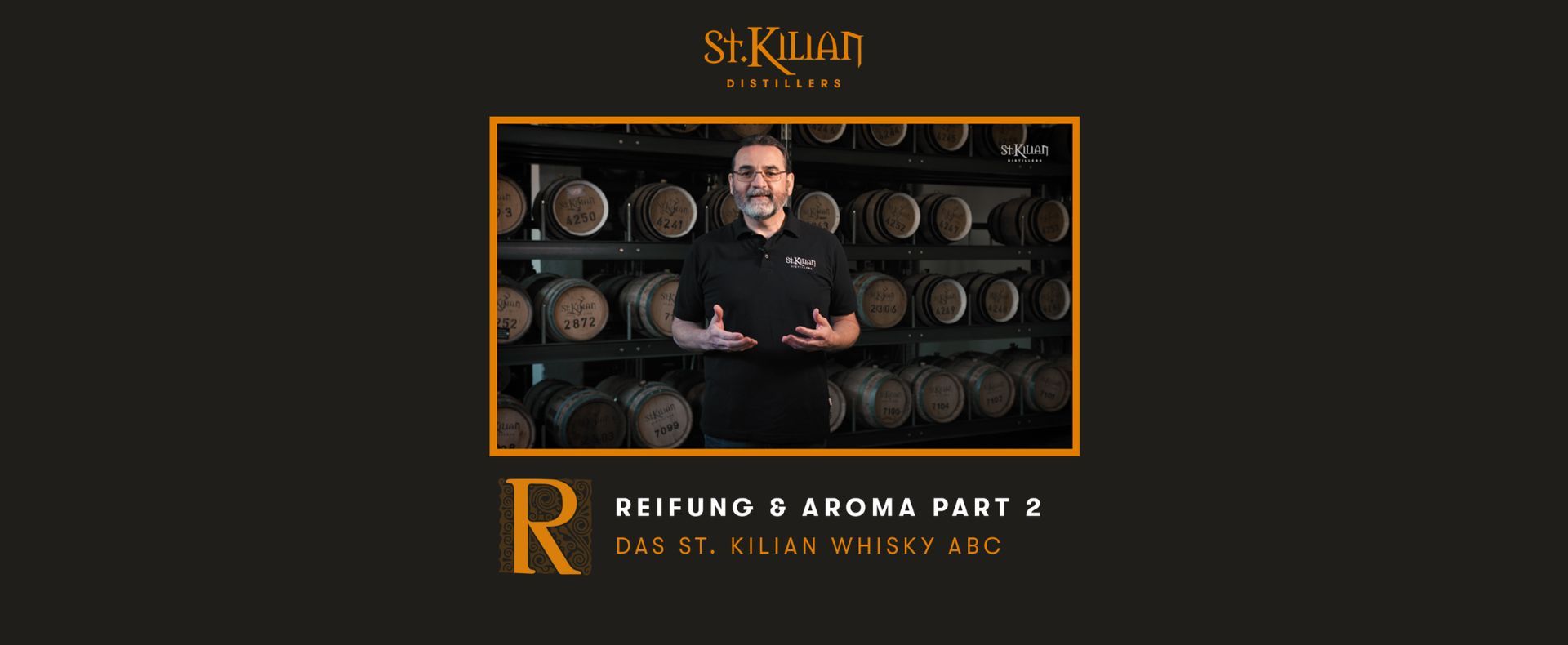R – like maturing and flavour Part 2

In which phases does the cask maturation of whisky take place?
The maturation of whisky in an oak cask can be divided into three stages, namely additive, subtractive and interactive maturation. These three phases of maturation do not follow a strict sequence, but overlap and sometimes merge into one another.
What is subtractive maturation?
This is best illustrated by a charred oak cask. Oak behaves like a sponge and soaks up liquid. An oak cask made from new, unused staves (‘virgin oak’) in particular soaks up spirit eagerly as soon as the cask is filled with it. The spirit also penetrates more or less deeply into the staves during cask maturation, depending on the season. The spirit passes through the layer of charcoal formed on the inside of the staves by the charring of the casks. This carbonisation layer acts like a filter and has the ability to remove the unpleasant and odour-intensive sulphur compounds by adsorption. The cask therefore subtracts substances from the maturing distillate that are considered undesirable in the later whisky.
Does the black charcoal layer also contribute to the colour of the whisky?
No. The activated charcoal layer contributes little or nothing to the colour or flavour of the maturing spirit. Their role is to remove unwanted flavours in the new make through a combination of adsorption and oxidation to ultimately improve the quality of the maturing whisky. In addition, the charring breaks up the structure of the oak wood more, so that the spirit can penetrate the staves even more easily and deeply.
What is additive maturation?
As the maturing distillate penetrates the cask staves, the flavour-rich wood decomposition products formed in the wood during the toasting or charring process are released over time. But the natural ingredients of the wood, which in addition to cellulose, hemicellulose and lignin make up around 10 to 12 per cent of the dry mass, are also dissolved out of the staves by the distillate. These include tannins, oils, fats, resins, acids, ring-shaped esters (lactones), vanillin and many other aromatic compounds, such as eugenol, which smells of cloves. All these substances are released from the wood into the later whisky, i.e. they are added to the spirit.
Are the wood constituents continuously released into the distillate?
No. The release of the substances naturally occurring in the oak wood and formed by heat (‘toasting, charring’) to the maturing distillate during cask maturation is not continuous. The extraction is therefore not linear, but follows a logarithmic curve. It has been scientifically proven that in an observation period of three years, half of all substances are released from the wood to the maturing spirit after the first 30 to 50 days of cask maturation and that this release rate decreases significantly thereafter.
What happens during interactive maturation?
Oxygen comes into play during the interactive maturation of a new make into whisky. The air contains about 21 per cent oxygen. Due to the porosity of oak wood, air passes through the microscopic channels of the wooden staves from the outside into the inside of a cask. The oxygen in this air can then undergo chemical reactions, so-called oxidations, with certain substances in the distillate. Oxygen oxidises the alcohol ethanol to acetaldehyde. This is a compound that has a pungent aroma of unripe, green fruit. This aldehyde can be further oxidised with oxygen to acetic acid. This acid can in turn undergo an esterification reaction with ethanol and react to form ethyl acetate. A compound that smells of green apples in small quantities, but has an unpleasant adhesive odour in higher concentrations.
Is only ethanol oxidised by oxygen?
No. Of course, other alcohols, such as fusel oils from fermentation, can also react with oxygen via the aldehyde stage to form the corresponding acids. These in turn can form new, mostly fruity esters with various alcohols. These are then revealed in the matured whisky with notes of apples, pears, apricots, peaches, cherries, tropical fruits and many more.
Do substances other than alcohols also react with atmospheric oxygen?
Of course. For example, the tannins also react with oxygen. This reaction is catalysed, i.e. supported, by copper ions that originate from the still and enter the distillate in traces during distillation. When the tannins react with oxygen, some strongly colouring substances, so-called quinones, are formed, which are released into the maturing distillate. This is how part of the colour of the later whisky is created.
How quickly do oxidation reactions take place in the cask?
Although the process of oxidation begins as soon as a cask is filled, it takes at least five to seven years for the effects of oxidation to become clearly recognisable on the nose and palate.